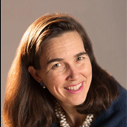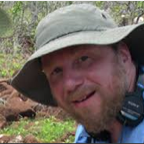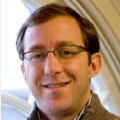“Bringing Lost Historical Space into the Three-Dimensional Metaverse: Thoreau’s Walden in Second Life.”
Daniel Soucier
“Surface and Infrastructure: Mapping the Hidden Worlds
of Undersea Cables.”
Nicole Starosielski
Global communications infrastructure, including the wires, towers, and satellites that transmit international signals, are increasingly private sites, inaccessible and unknown to the publics that they serve. They have been described as an “invisible city,” a space beyond the threshold of everyday observation.1 Fiber-optic undersea cables are perhaps the least perceptible of these technologies despite the fact they carry over 95% of transoceanic Internet traffic. Submerged along the seafloor, they are out of reach, disconnected from the social sphere above. As they reach the shore, these cables must be extended through inhabited and contested environments in order to interconnect with national systems. Here, they intersect public space and emerge into the visual landscape. Even when they are visual, however, these networks rarely become visible to the publics that they intersect, in part because we tend to believe that contemporary information traffic is transmitted wirelessly, through the air, rather than underground and under the sea. Network Environments (1-10) is a series of photographs taken between 2009 and 2010 documenting the material traces of communications cables in their natural environments and marking the threshold of network visibility. The project takes part in a “politics of infrastructural visibility,” an attempt to make visible the systems supporting modern life visible to those who depend on them and to develop a visual lexicon for the perception of media infrastructures.
“Putting the ‘Public’ Back in ‘Publication’”
Anne Collins Goodyear
Focusing on the adoption of new digital platforms by art historical journals and museums, this session will look at the relationship between traditional scholarly publication and the public dissemination of information by museums. We will discuss the recent development of Scalar projects by the Art Bulletin and caa.reviews by the College Art Association as well as the development of new public(ation) interfaces at individual museums, such as the Bowdoin College Museum of Art, and the creation of projects using platforms designed to integrate collections information from numerous entities.
“Affordances of the Digital: Mapping, Modeling, and Early Modern Digital Methodologies.”
Erica Zimmer
How might digital dimensions deepen our sense of publishing pasts? Building upon Peter Blayney’s The Bookshops in Paul’s Cross Churchyard (1990), this project will organize early modern English printed texts spatially and temporally while nuancing current pathways to and through these works. Creating this virtual marketplace of ideas, works, and contextual information will allow audiences to browse from a first-person perspective, while harnessing the capabilities of what Martin Mueller has termed “scalable reading” to reveal patterns of wider interest. Ultimately, the project’s design will also bring forward further connections among books, their makers, and their environments, enriching perspectives on this textual corpus while encouraging users to explore.
Keynote Talk:
“Technologies of Memory: The Troubled Archive of Nineteenth Century Literature”
Andrew Stauffer
As digital scholars, we are reworking the technologies of memory that we inherited from the nineteenth-century, the great age of industrial printing. But what is the future of the printed record of the nineteenth century in the digital age? In building the global digital library, we need to attend to the richly-encoded structures of the book and its history, even as we use digital technologies to unfold and enliven our bookish inheritance.
“Is It a Sorbet, or Is My Radio Broken?”
Ari Epstein
You have been listening to sound since before you were born; it used to be your primary way of learning about the world. For most people the sense of sight eventually takes charge, leaving hearing as a poor auxiliary. But sound is lurking just below the surface; it has deep hooks in your psyche, and a good audio producer can take hold of those hooks and pull, hard, in a way that interrupts and disrupts everyday life. In this session we will explore ways to surface the power of sound–to grab people’s attention, to shake them up, and to make a difference.
In order to get the most out of this session, we would like you to create a very short audio piece, so that you are a producer, not just a consumer, of sound. The model we’d like to follow is the “Sonic ID,” a form created by Jay Allison and others at WCAI/WNAN to replace the standard station-identification break. In Sonic IDs, there might be a snippet of someone telling a story, some surprising or unusual sound, a clip of live action, or any of a variety of other things, followed by the usual “You are listening to Station xxx …” message. Sonic IDs come on, without any introduction, between programs or during breaks in the middle of programs, and one of Jay’s original intentions was that they should disrupt or confuse the listener, at least at first. As he put it, “There’s nothing to focus the mind like getting lost. [Sonic IDs are] successful when you turn and you look at the radio, ’cause you think something went wrong for a sec, and then you catch on…. They give a useful dose of strangeness to your day and make you think differently….”
Please record some sounds–ambient sound, voice (yours and/or other people’s), music, animal sounds, anything you like (you can use a built-in laptop microphone, a smartphone or tablet with a sound-gathering app or some other recording device)–and edit them (using Audacity, which is free, or some other editing program) into a 30- or 60-second piece that you could imagine dropping into a station break, and that you think might disrupt or confuse the listener at first, but that will ultimately leave him or her with a satisfying, coherent, and maybe attitude-changing experience.
Please upload your sound file by 11:59 PM on October 8, to www.dropbox.com/home/Ari%20Epstein%20Workshop
(Make sure to sign up for a free Dropbox account to access the folder)

 Anne Collins Goodyear (Co-director, Bowdoin Art Museum) is former curator at the Smithsonian's American Art Museum. As president of the College Art Association she presided over its first THATCamp in 2013.
Anne Collins Goodyear (Co-director, Bowdoin Art Museum) is former curator at the Smithsonian's American Art Museum. As president of the College Art Association she presided over its first THATCamp in 2013. Ari Epstein (Terrascope, Civil and Environmental Engineering, MIT) devises innovative settings for project-based, team-oriented education, from youth radio to exhibition design.
Ari Epstein (Terrascope, Civil and Environmental Engineering, MIT) devises innovative settings for project-based, team-oriented education, from youth radio to exhibition design. Nicole Starosielski (Media, Culture, and Communication, NYU) focuses on the global distribution of digital media, most recently on how transoceanic cables from telegraph to Internet have affected the geopolitics of islands and coasts. Her new media project Surfacing inspired the conference's title.
Nicole Starosielski (Media, Culture, and Communication, NYU) focuses on the global distribution of digital media, most recently on how transoceanic cables from telegraph to Internet have affected the geopolitics of islands and coasts. Her new media project Surfacing inspired the conference's title. Andrew Stauffer (Department of English, University of Virginia) is renowned as a digital historian of 19th-century literature and for his leadership of NINES (Networked Infrastructure for Nineteenth-Century Electronic Scholarship).
Andrew Stauffer (Department of English, University of Virginia) is renowned as a digital historian of 19th-century literature and for his leadership of NINES (Networked Infrastructure for Nineteenth-Century Electronic Scholarship).


